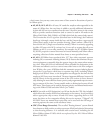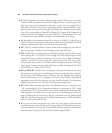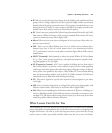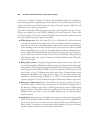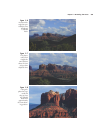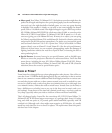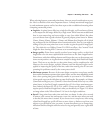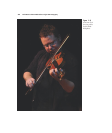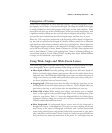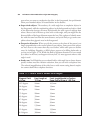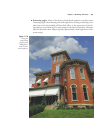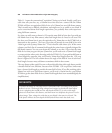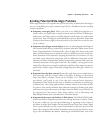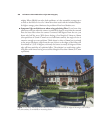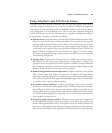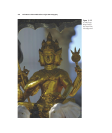
Categories of Lenses
Lenses can be categorized by their intended purpose—general photography, macro
photography, and so forth—or by their focal length. The range of available focal lengths
is usually divided into three main groups: wide-angle, normal, and telephoto. Prime
lenses fall neatly into one of these classifications. Zooms can overlap designations, with
a significant number falling into the catch-all wide-to-telephoto zoom range. This sec-
tion provides more information about focal length ranges, and how they are used.
When the 1.5X crop factor (mentioned at the beginning of this chapter) is figured in,
any lens with an equivalent focal length of 10mm to 16mm is said to be an ultrawide-
angle lens; from about 16mm to 30mm is said to be a wide-angle lens. Normal lenses have
a focal length roughly equivalent to the diagonal of the film or sensor, in millimeters,
and so fall into the range of about 30mm to 40mm on a D7000. Short telephoto lenses
start at about 40mm to 70mm, with anything from 70mm to 250mm qualifying as a
conventional telephoto. For the Nikon D7000, anything from about 300mm-400mm
or longer can be considered a super-telephoto.
Using Wide-Angle and Wide-Zoom Lenses
To use wide-angle prime lenses and wide zooms, you need to understand how they affect
your photography. Here’s a quick summary of the things you need to know.
■ More depth-of-field. Practically speaking, wide-angle lenses offer more depth-of-
field at a particular subject distance and aperture. (But see the sidebar below for an
important note.) You’ll find that helpful when you want to maximize sharpness of
a large zone, but not very useful when you’d rather isolate your subject using selec-
tive focus (telephoto lenses are better for that).
■ Stepping back. Wide-angle lenses have the effect of making it seem that you are
standing farther from your subject than you really are. They’re helpful when you
don’t want to back up, or can’t because there are impediments in your way.
■ Wider field of view. While making your subject seem farther away, as implied
above, a wide-angle lens also provides a larger field of view, including more of the
subject in your photos. Table 11.1 shows the diagonal field of view offered by an
assortment of lenses, taking into account the crop factor introduced by the Nikon
D7000’s smaller-than-full-frame sensor.
■ More foreground. As background objects retreat, more of the foreground is
brought into view by a wide-angle lens. That gives you extra emphasis on the area
that’s closest to the camera. Photograph your home with a normal lens/normal
zoom setting, and the front yard probably looks fairly conventional in your photo
(that’s why they’re called “normal” lenses). Switch to a wider lens and you’ll discover
that your lawn now makes up much more of the photo. So, wide-angle lenses are
Chapter 11 ■ Working with Lenses 363



